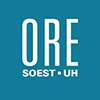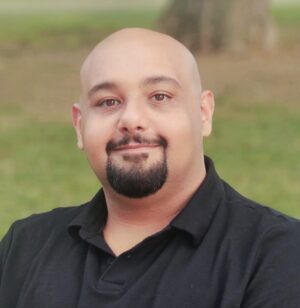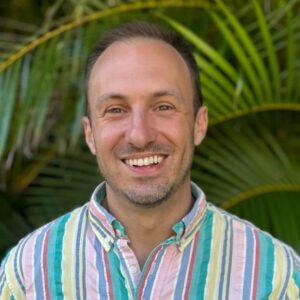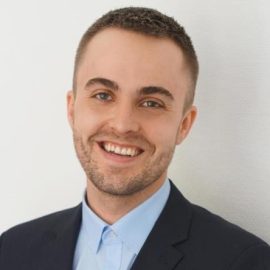To subscribe to the ORE seminar mailing list, click here.
For a (working draft) list of upcoming seminars, click here.
If you are interested in giving an ORE seminar, please contact us at nosal [at] hawaii [dot] edu.
Seminar: Dynamic Behavior of Materials in Extreme Conditions
Holmes Hall 243 2540 Dole Street, Honolulu, HI, United StatesEmad Makki, Ph.D. Visiting Professor Department of Ocean and Resources Engineering, SOEST University of Hawaii at Manoa *In person and via Zoom* Zoom Meeting Link Meeting ID: 963 5962 3640 Passcode: OREseminar https://hawaii.zoom.us/j/96359623640 In recent years, the need to explore innovative methods for mitigating air blast waves has become increasingly important, not only for defense but also for a variety of industrial and transportation applications. Events involving explosive forces, such as those caused by accidents in the process industry or impact loading in transportation, can have significant consequences. Effective blast mitigation techniques are essential for enhancing safety and resilience in
Seminar: Towards a World of Ubiquitous Robotic Millisystems
Holmes Hall 241 2540 Dole Street, Honolulu, United StatesDaniel S. Drew, Ph.D. Assistant Professor Department of Electrical & Computer Engineering University of Hawaii at Manoa *In person (Holmes Hall 241) and via Zoom* Meeting ID: 963 5962 3640 Passcode: OREseminar https://hawaii.zoom.us/j/96359623640 In the near future, swarms of insect-scale robots will be vital tools in industrial, commercial, and personal settings. While bioinspired approaches to propelling insect-scale fliers have yielded promising results, they present a very challenging path to ubiquity. In this talk, I will present my efforts to develop a new class of flying microrobot which moves unlike anything found in nature, propelled by silent and solid-state atmospheric ion
Seminar: Observing the ocean acoustically with the Kauai Beacon source
ORE ZoomKay (Kai) Gemba, Ph.D. Associate Professor, Department of Physics Naval Postgraduate School, Monterey, CA, USA *Zoom only* Meeting ID: 963 5962 3640 Passcode: OREseminar https://hawaii.zoom.us/j/96359623640 The 75 Hz center-frequency Kauai-Beacon Source is well-situated for observing the North Pacific Ocean acoustically, and ongoing efforts enable transmissions and analysis of broadband signals for this 18-month duration time-series. Previously, we demonstrated acoustic receiving along paths to Wake Island (∼3500 km), Monterey Bay, and OOI near Oregon (∼4000 km). Travel time observations to Wake Island compare well with HYCOM reanalysis data in 2023, but the model does not capture a continuous warming trend observed
Seminar: Acoustic inference of sea ice mechanical properties
ORE ZoomD. Benjamin Reeder, Ph.D. Research Professor Department of Oceanography Naval Postgraduate School, Monterey, CA, USA *Zoom only* Meeting ID: 963 5962 3640 Passcode: OREseminar https://hawaii.zoom.us/j/96359623640 Arctic climate is important globally and regionally, in terms of its effects on global temperatures, global sea level, commercial activities and native coastal communities. The Arctic energy budget is driven by atmospheric temperatures, cloud cover, wind patterns, freshwater discharge, oceanic forcing and sea ice cover. Sea ice cover is particularly important because it buffers air-sea heat flux and strongly influences Earth’s absorption of solar radiation through ice-albedo feedback mechanism. Understanding the relative contributions of all
Seminar: Comparing Observations of Seafloor Distributed Fiber-optic Sensing to Observe Ocean Waves
ORE ZoomDr. Hannah Glover Research Associate Oregon State University *Zoom only* Meeting ID: 963 5962 3640 Passcode: OREseminar https://hawaii.zoom.us/j/96359623640 Distributed Acoustic Sensing is emerging as a powerful technique for observing geophysical and oceanographic processes. DAS methods can provide significant improvements in the spatial and temporal density of in-situ data collection. A single instrument attached to a fiber-optic cable, such as a seafloor telecom cable, can continuously record nanoscale cable strain and temperature with meter-scale measurement spacing over 10s of kilometers at kHz frequencies. In this seminar, I will explore recent applications of Distributed Acoustic Sensing (DAS) for quantitatively measuring ocean surface
PhD Defense: Designing Wave-Powered Ocean Observing: Experimental Findings of an Oscillating Water Column Type Wave Energy Converter.
Holmes 287 2540 Dole Street, Honolulu, HI, United StatesNicholas Ulm PhD Candidate Department of Ocean and Resources Engineering University of Hawai’i at Mānoa **This defense will be held both in person (Holmes Hall 287) and over Zoom** Meeting ID: 945 9089 1382 Passcode: NicPHD The study of oscillating water column (OWC)-type wave energy converters (WEC) has primarily focused on applications in the nearshore environment with an end use in residential power grids. This dissertation examines the power performance of a new OWC geometry relative to blue economy objectives that focus on providing power in the intermediate-water-depth environment. This geometry, which is based on the Halona Blowhole, consists of
Seminar: Dynamics of Ice Floes: Exploring Wave Attenuation and Overwash through Flexible Plate Models
Holmes Hall 243 2540 Dole Street, Honolulu, HI, United StatesJonas Behnen ORE Graduate Student The University of Hawaii at Mānoa *In person and via Zoom* Zoom Meeting Link Meeting ID: 963 5962 3640 Passcode: OREseminar https://hawaii.zoom.us/j/96359623640 In this talk, we will explore the interactions between ocean waves and ice floes using flexible plate models. Through a combination of experiments in a wave flume and simulations with LS-DYNA, we investigate how waves lose energy when interacting with ice floes and what happens when steeper waves trigger overwash — a phenomenon where water splashes onto the ice surface. Our data show that shorter waves lead to greater energy loss, while the
MS Plan B Defense: A Navigation System to Enable Real-Time Relative Positioning at Sea
Holmes 287 2540 Dole Street, Honolulu, HI, United StatesMatthew Feeley Master’s Student Department of Ocean and Resources Engineering University of Hawai’i at Mānoa **This defense will be held in-person only at Holmes 287 Oceanographic research conducted by unmanned robotic swarms demands spatially precise coordination of vessels. Although research in position control of autonomous vessels has advanced, it is challenging to acquire relative positioning guidance at sea without committing significant resources toward vessel modifications or new equipment. This paper presents an overview of NarwhalNav, a navigation technology designed to make relative positioning data more accessible. NarwhalNav integrates a GNSS receiver, radio and software into a mobile package for rapid
Seminar: Expanding the Regenerative Blue- and Bio-economies for the Benefit of the Global Environment
ORE ZoomStuart Bussell, Ph.D. President Verpond, Inc. 1420 Grand Ave, Suite A, San Marcos, CA 92078 stuartbussell@verpond.com *Zoom only* Meeting ID: 963 5962 3640 Passcode: OREseminar https://hawaii.zoom.us/j/96359623640 The world is at an economic transition point when the harm from continued fossil fuel use, destruction of critical natural habitats to meet increased agricultural demand, and ocean fishing could be exceeding their benefits. The blue- and bio-economies are both expanding and have the potential to begin reversing the adverse environmental impacts from past and ongoing unsustainable economic activities. Verpond is in the proof-of-concept stage advancing an open aquatic algae cultivation system (OAACS™) to
Seminar: Design and Analysis of Soft Structures for Underwater Applications
ORE ZoomLeixin Ma, Ph.D. Assistant Professor Arizona State University Leixin.Ma@asu.edu *Zoom only* Meeting ID: 963 5962 3640 Passcode: OREseminar https://hawaii.zoom.us/j/96359623640 Traditional engineering structures are made of rigid structures with simple geometry, such as ship hulls and wind turbine blades. In contrast, recent advancements in manufacturing open the door to designing and manufacturing soft structures with programmable and unconventional functionalities. An optimal and efficient design of these soft structures interacting with external loads, such as fluids, remains challenging. In this talk, I will discuss how a combined physics-based modeling and machine-learning approach can help tackle the challenges. The key challenges involve the
PhD Defense: Innovative Coastal Defense in an Idealized Barrier Reef System
Holmes 287 2540 Dole Street, Honolulu, HI, United StatesShijie Huang PhD Candidate Department of Ocean and Resources Engineering University of Hawai’i at Mānoa **This defense will be held both in person (Holmes Hall 287) and over Zoom** Meeting ID: 862 6019 2680 Passcode: ShijiePHD Climate change has dramatically exacerbated coastal erosion, primarily through the effects of sea level rise, the intensification of tropical storms, and the increased frequency of high-wave events. These processes pose a severe threat to the tourism-based economy and the densely populated coastlines of Hawai‘i, where coastal erosion has become an urgent issue. Compounding the problem, traditional coastal defense structures—such as seawalls, breakwaters, and revetments—have
Seminar: Marine Mammal Research Innovations: Bridging Empirical and Applied Science, Local and Global Issues
Holmes Hall 243 2540 Dole Street, Honolulu, HI, United StatesAude Pacini, Ph.D Assistant Researcher Mammal Research Program Hawaii Institute of Marine Biology, University of Hawaii, SOEST *In person and via Zoom* Zoom Meeting Link Meeting ID: 963 5962 3640 Passcode: OREseminar https://hawaii.zoom.us/j/96359623640 Marine mammal species are key ecological indicators of ocean health. As such, it is important to understand not only their physiology and ecology but also their resilience to natural and anthropogenic stressors. Here we will highlight some of the recent projects using acoustics to better understand marine mammals' distribution and their interactions with fisheries. We will also discuss how the use of innovative technologies allow us to




